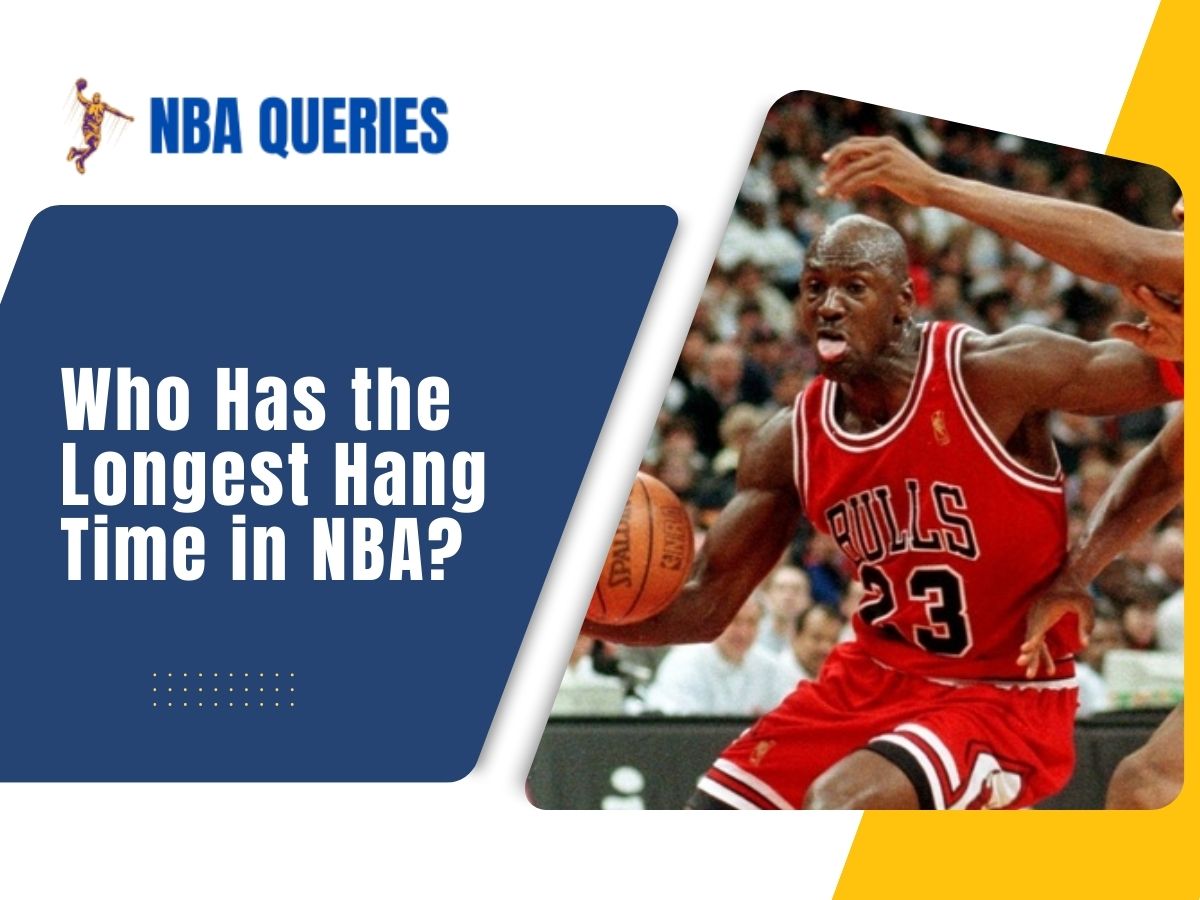In the high-flying world of professional basketball, where gravity-defying dunks and acrobatic lay-ups are commonplace, one player stands out for his seemingly superhuman ability to stay airborne: Michael Jordan. The legendary Chicago Bulls shooting guard, often hailed as the greatest basketball player of all time, possessed a remarkable hang time that left fans and opponents alike in awe. But what exactly is hang time, and how did Jordan achieve such extraordinary feats? Let’s delve into the physics behind this captivating aspect of the game.
What Is Hang Time?
Hang time refers to the duration an object or person remains in the air after leaving the ground. In basketball, it specifically measures the length of time a player stays airborne after jumping. Whether executing a powerful slam dunk, a graceful lay-up, or a mid-range jump shot, a player’s hang time determines how long they can defy gravity and maneuver in the air.
The Science Behind Hang Time
1. The Force of Gravity
As with everything on Earth, gravity plays a pivotal role. The moment a player’s feet leave the ground, Earth’s gravitational force begins pulling them back down. Despite their desire to soar through the air, gravity relentlessly tugs them toward the ground. The acceleration due to gravity (g) is approximately 9.81 meters per second squared (m/s²) universally across the planet.
2. Calculating Hang Time
To calculate hang time, we consider several key values:
- Initial Height: The height from the ground when the player takes off (usually zero for a standing jump).
- Initial Velocity: The speed at which the player launches into the air.
- Acceleration: The value of acceleration acting against the player’s upward motion (equal to g).
Using these values, we can determine the hang time using the following formula:
[ \text{Hang Time} = \frac{{2 \times \text{Initial Velocity}}}{{\text{Acceleration}}} ]
3. Michael Jordan’s Hang Time
Now, let’s focus on the man himself: Michael Jordan. His longest recorded hang time—when he remained airborne the longest—was an astonishing 0.92 seconds. To put this in perspective, the average human’s hang time is around 0.53 seconds, with a maximum achievable hang time of 1 second. Jordan’s ability to stay aloft for nearly a full second defied conventional limits and contributed to his status as a basketball icon.
The Impact on the Game
Jordan’s extended hang time had several implications:
- Dunking Dominance: His ability to hang in the air allowed him to execute thunderous dunks, soaring above defenders and finishing with flair. His iconic “Air Jordan” dunks became synonymous with his name.
- Mid-Air Adjustments: Jordan could adjust his shots mid-flight, evading defenders and releasing the ball at the optimal moment. His balletic movements in the air baffled opponents.
- Shot Creation: Whether driving to the basket or pulling up for a jump shot, Jordan’s hang time gave him precious milliseconds to read the defense and make split-second decisions.
The Hang Time Legends
1. Dr. J (Julius Erving)
Before Michael Jordan, another basketball icon showcased remarkable hang time: Julius Erving, affectionately known as “Dr. J.” Erving, a star in both the ABA and NBA, mesmerized audiences with his soaring dunks and graceful maneuvers. His hang time was a testament to his athleticism and creativity. Dr. J’s signature move—the “Rock the Baby” dunk—involved cradling the ball like an infant before emphatically slamming it through the hoop. His hang time allowed him to execute this move with finesse, leaving defenders helpless.
2. Vince Carter
In the late 1990s and early 2000s, Vince Carter electrified NBA arenas. His hang time was otherworldly, as if he had a secret pact with gravity. Carter’s iconic dunk during the 2000 NBA Slam Dunk Contest—a 360-degree windmill—remains etched in basketball lore. He seemed to defy physics, gliding through the air effortlessly. Carter’s hang time was a blend of power, elegance, and sheer audacity.
The Role of Leg Strength
1. Plyometrics and Explosiveness
Hang time isn’t solely about leaping ability; it’s also about how quickly a player can generate force. Plyometric exercises—such as depth jumps, box jumps, and squat jumps—enhance leg explosiveness. Strong quadriceps, hamstrings, and calf muscles contribute to sustained hang time.
2. The Achilles Tendon
The Achilles tendon, the largest tendon in the human body, plays a crucial role. It stores and releases energy during jumps. A well-conditioned Achilles tendon allows players to spring off the ground efficiently. Michael Jordan’s Achilles tendon was like a coiled spring, propelling him skyward.
The Hang Time Hall of Fame
1. Dominique Wilkins
Dominique Wilkins, the “Human Highlight Film,” deserves a spot in the hang time hall of fame. His battles with Dr. J in the 1980s showcased their aerial prowess. Wilkins’ tomahawk dunks and reverse slams were poetry in motion. His hang time was a blend of raw power and artistic flair.
2. LeBron James
LeBron James, the modern-day basketball titan, combines brute strength with finesse. His hang time allows him to finish at the rim amidst multiple defenders. Whether it’s a chasedown block or a thunderous dunk, LeBron defies gravity with ease.
Stay tuned for more basketball insights and gravity-defying moments in the ever-evolving NBA landscape. 🏀🚀

